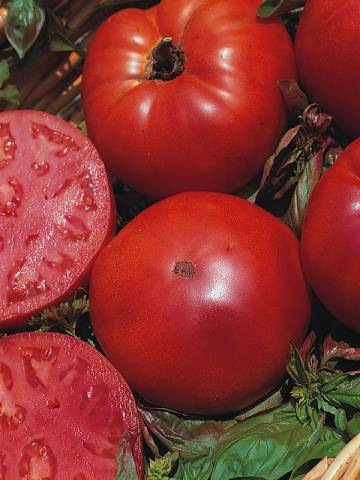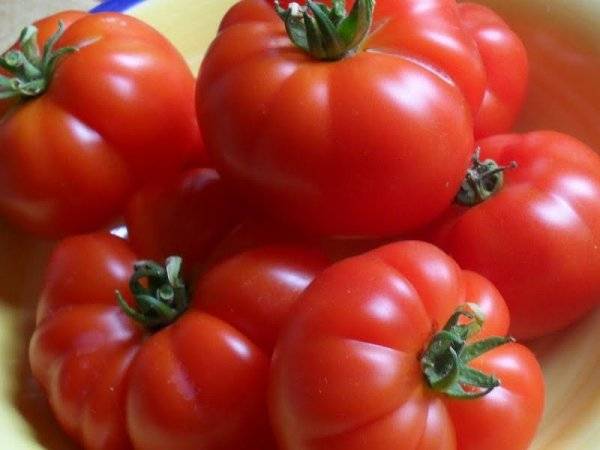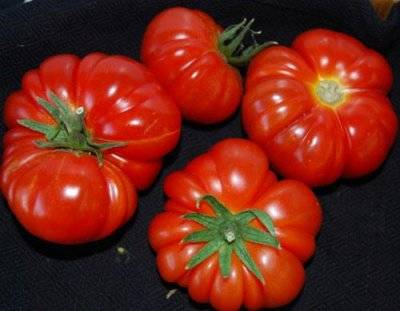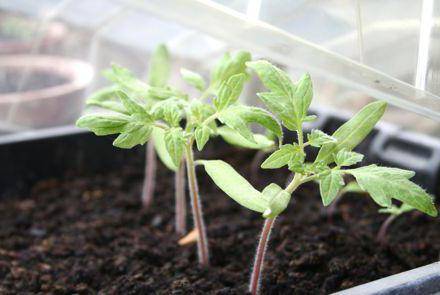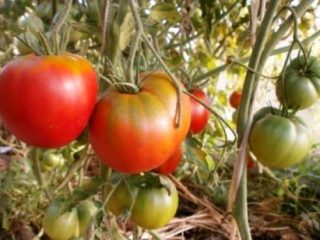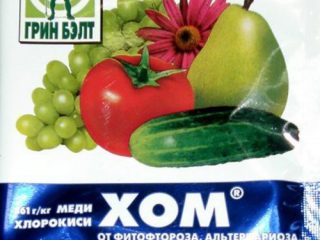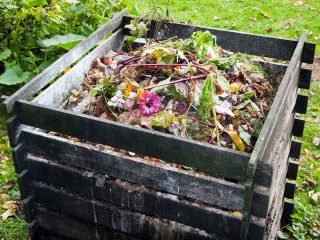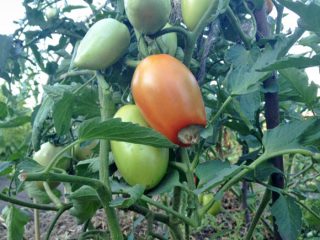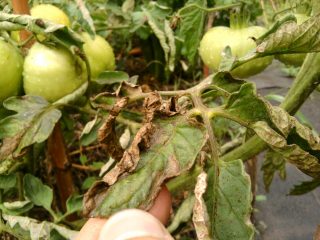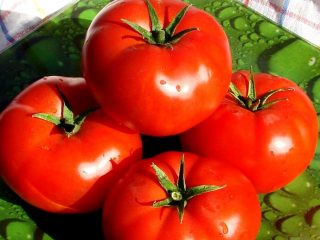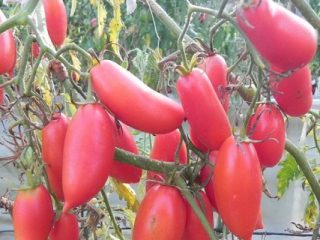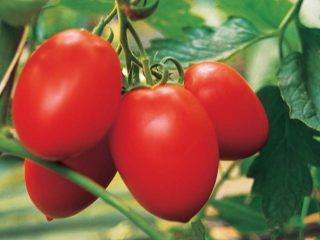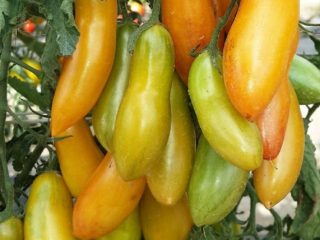Content
Modern vegetable growers are trying to select varieties of tomatoes for their plot in order to obtain a harvest for a long time. In addition, they are interested in tomatoes with different culinary capabilities. The Marmande tomato variety is a unique plant that satisfies all needs.
For greater clarity, a detailed description and characteristics of tomatoes will be confirmed by reviews and photos sent by those gardeners who have been working with the variety for several years.
Description
When purchasing seeds Dutch selection tomatoes You may come across bags with the following names: Super Marmande and Marmande tomato. These are not doubles or namesakes, but one and the same plant. It’s just that different seed companies call it differently.
Bushes
The variety appeared more than 20 years ago, in the last century, and is very popular among Russians due to its unique properties:
- Firstly, they are attracted to early ripening periods. 85-100 days after the first green hook hatches in the box with seedlings, you can collect the first ripe fruits.
- Secondly, the variety is unpretentious and can successfully bear fruit on various soils and in all regions of Russia.Many gardeners living in risky farming zones successfully cultivate crops even in open ground or under temporary film covers.
- Thirdly, Marmande tomatoes are not hybrids, so it is possible to collect your own seeds. After all, varieties of Dutch selection are not cheap.
- Marmande is an indeterminate type plant, not standard, 100-150 cm high, depending on the planting location. The leaves are dark green, regular in shape.
Fruit
The inflorescences are simple, with up to 4-5 ovaries formed on each of them. The Marmande tomato is characterized by large fruits weighing 150-160 grams. They are rounded and flat with an unusual relief in the shape of ribs. At the filling stage, the fruits are juicy green, and at biological ripeness they are bright red. Tomato varieties are dense, fleshy, with several chambers. There are few seeds, they are medium in size. There is little dry matter.
Fruits with shiny skin, juicy, fleshy pulp. The taste of Marmande tomatoes is delicate, sweet, rich in aroma, truly tomato.
Use in cooking
From the description of the variety it follows that the fruits are dense and sweet, so their purpose is universal. Since the fruits ripen early, summer vitamin salads and delicious tomato juice are prepared from them. Tomatoes are good in various preparations for the winter, both whole and chopped. Fans of tomato jam use the fruit because it contains a lot of natural sugar.
Characteristic
The Marmande tomato is very popular among gardeners. Compared to other varieties it has advantages:
- Terms of ripening. The tomato is an early ripening, the first red fruits, depending on the planting of seedlings, begin to be collected in June and finish after a month and a half.
- Harvest.According to the description of the variety, the Marmande tomato is high-yielding, which is confirmed by reviews and photos.
- Features of fruiting. It is stretched, the tomatoes on individual clusters ripen together and do not crack.
- Taste and application. The fruits of the variety are sweetish and sour and have a universal purpose. When preserved, the fruits retain their integrity even under the influence of boiling water and do not burst.
- Marketable condition. Tomatoes, based on the description and characteristics, have a dense skin, so they are easily transported with virtually no losses.
- Care. The plants are unpretentious and do not require much attention. Even beginners produce an excellent harvest.
- Keeping quality. The fruits are stored for a long time without losing their taste and beneficial qualities.
- Immunity. Tomatoes of this variety are particularly resistant to fusarium and verticillium blight, as well as other diseases of nightshade crops. Practically not affected by pests.
Reviews about the Marmande tomato are mostly positive; gardeners do not name any shortcomings. But the creators of the variety themselves warn that excessive feeding can provoke rapid growth of leaves and shoots. This negatively affects fruiting.
Growing and care
Tomato Marmande, according to its characteristics and description, is a high-yielding variety. According to gardeners, growing them is not at all difficult.
The variety is grown through seedlings or by directly sowing seeds in the ground. The last option is possible in the southern regions of Russia. It is clear that the ripening dates will shift.
Seedling stage
To obtain high-quality seedlings, seeds are sown in the first half of March. Plants prefer breathable, loose soil rich in nutrients. You can make the soil yourself or use balanced compounds from the store.
- Before sowing, the soil is spilled with boiling water, and the seeds are disinfected in a pink solution of potassium permanganate. Sowing is carried out to a depth of one centimeter at a distance of 3-4 cm. You can avoid one of the operations, diving, if you sow the seeds in separate cups. In this case, the containers must be at least 500-700 ml so that the seedlings feel comfortable until they are planted in a permanent place.
- After sowing, the soil in the container is slightly moistened with a spray bottle, covered with film or a piece of glass and placed on a well-lit windowsill. Before germination, maintain a temperature of 22-23 degrees.
- With the appearance of sprouts, the covering is removed and the temperature is slightly reduced so that the Marmande tomato seedlings do not stretch out.
- Caring for seedlings does not cause much trouble: timely watering and fertilizing with wood ash.
- If the seedlings grow in a common container, if there are 2-3 leaves, they are transplanted into cups. The soil is taken the same as when sowing seeds.
- Ten days before planting in the ground, the plants need to be adapted to new conditions and hardened. To do this, Marmande tomatoes are taken outside. First for 10 minutes, then the time is gradually increased. If seedlings are grown in urban conditions, then you can use a balcony or loggia for hardening.
Landing in the ground
Tomato seedlings are planted in the garden bed after stable positive temperatures have been established day and night. It is possible a little earlier, but in this case you will have to cover the plants, since even a slight frost can cause harm.
A bed for a tomato variety is chosen in an open, sunny place where peppers, tomatoes, potatoes or eggplants were previously grown.Under no circumstances should they be planted after tomatoes, since disease spores can overwinter in the soil.
Rotted manure or compost, peat and a glass of wood ash must be added to the holes. It is better not to use fresh manure, since it stimulates the rapid growth of green mass and the tomatoes do not have the strength to bear fruit. Then fill with hot water. When the soil has cooled, the seedlings are planted, watered with warm water and immediately tied to a support.
Judging by the description, the tomato variety is grown with 3-4 stems. The formation of a bush is done after the plant takes root. All shoots on the plant must be removed throughout the growing season. Leaves under established inflorescences also need to be removed to increase yield.
Care in the ground
Further care for Marmande tomatoes is traditional:
- watering and weeding;
- loosening and removal weed;
- fertilizing and preventive treatment of plants.
You need to water the bushes at the root so that water does not get on the leaves, and only with warm water. Watering should be moderate; stagnation of water in the holes leads to damage to the root system.
Weed control must be carried out strictly, since pests and disease spores most often live on them. As for loosening, it is advisable to carry out this procedure after each watering. In addition, tomatoes must be hilled, since additional roots grow on the stem. And they must work for the development of the plant.
It is not necessary to use mineral fertilizers as a top dressing for this variety of tomatoes.You can get by with organics: infusions of mullein, green grass, solutions of boric acid, iodine, potassium permanganate. In addition to nutrition, medicines from the pharmacy have antiseptic properties and are used as preventative agents against diseases.
In pest control, you can use insecticides if necessary.

